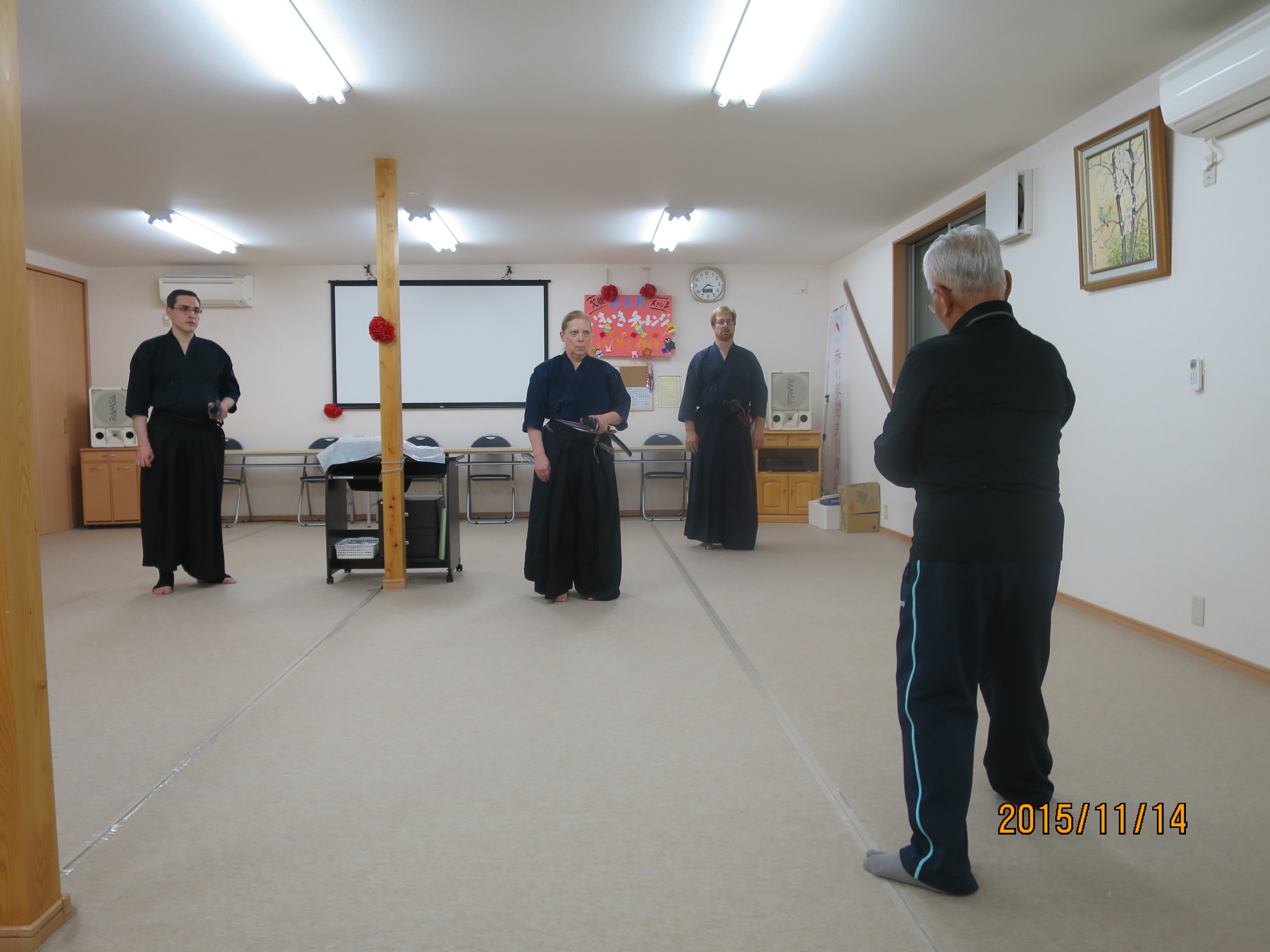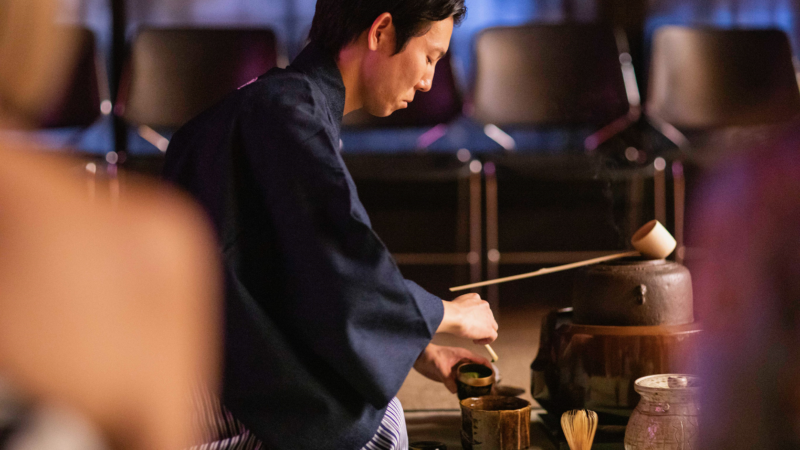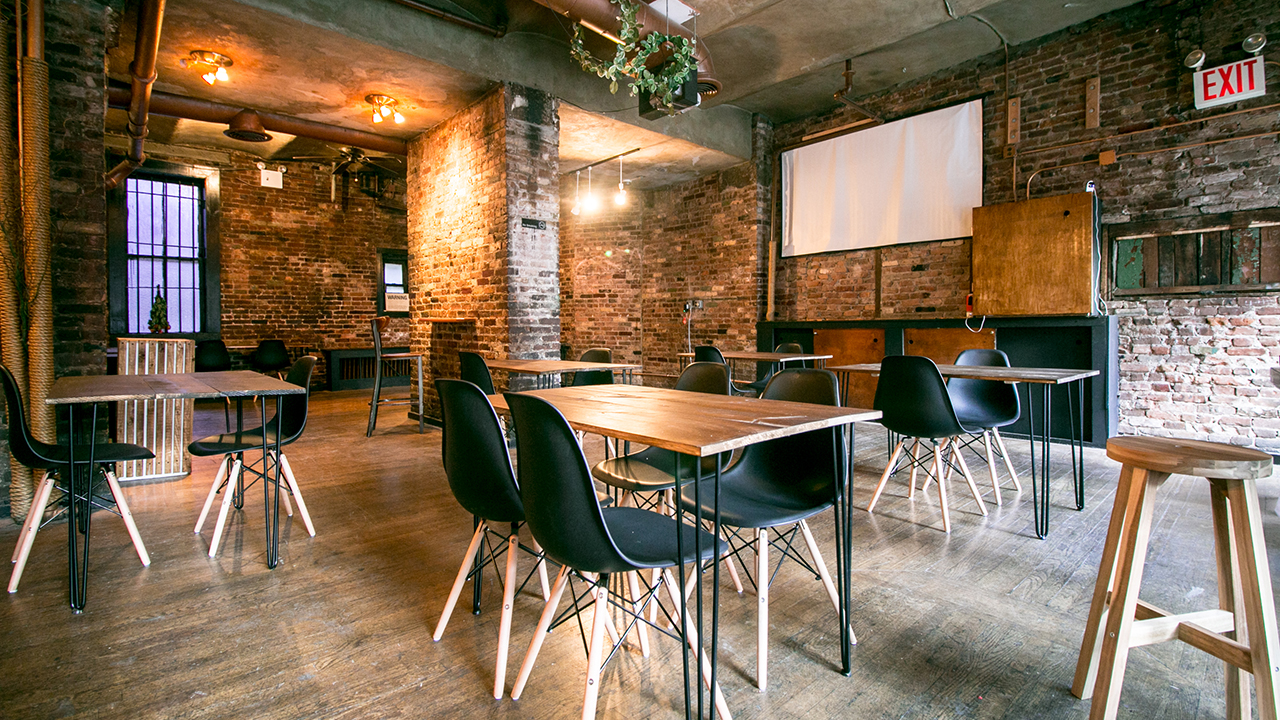Deborah Klens-Bigman, Ph.D. ◆ March 19, 2016

Many years ago, we had a guest student – a young Japanese man who was visiting New York for the summer. He was a shodan in kendo, young, strong and full of energy. At the time, we were practicing some kendo from time to time, and he had decided to join us.
One night, the regular teacher did not show up, so I was, by default, the teacher for the evening. Since I did not feel at all qualified to lead a kendo workout, I volunteered a swordsmanship class instead. Even though he had never handled a sword or even a bokuto, with typical enthusiasm, our guest was happy to give it a try.
Kendo and actual swordsmanship are very different from one another; not only in temperament, but in technique. Without getting too heavily into it, cutting with a sword is very different from striking with a bamboo shinai. I watched as our guest student’s enthusiasm increased throughout the class. He wasn’t afraid to try anything. On the other hand, one of my sempai, who came late to the class that night, could not seem to do anything right. The more the Japanese guest seemed to enjoy himself, the more frustrated the sempai became. Just for fun, we had gotten some sheets of newspaper and were cutting them with iaito (it can be done). No matter how hard he tried, the sempai could not make a decent cut. In fact, the harder he tried, the worse things got. Meanwhile, the Japanese kendoka cut as though he had been doing it all of his life.
I am sure most people have endured that sort of frustration. It seems our first attempt at something new is so much better than our fifth, sixth, or even sixtieth. To use a personal example, I once attended a kyudo (traditional archery) “first shot” weekend. After 2-1/2 days of intense preparatory practice, I was allowed to take a first shot at a target. I remember not being able to see anything but the target, or feel anything but the bow and arrow in my hands. I took the shot, and it seemed to me to be perfect. However, the balance of that day and the following morning, it seemed like I could do nothing at all. I would lose my grasp of the arrow, and it would fall to the ground as I began to draw the bow; or, as I was drawing, the string would suddenly catch in the groove in the archery glove (it’s supposed to be there). The string slipping into the groove sounded like a rubber band breaking. In a panic over the sound, I would invariably drop the arrow again. The teacher told us to treat the abortive attempts as “shots” and we would have to give way to the next person, who, though awkward, would somehow display more natural talent than I did, or something. In any case, she would make a shot. Then I would fail again. I believe I did not complete a single shot after the first, perfect one for the rest of the weekend.
Have you ever tried to pick up a sleeping cat? She weighs a ton. She doesn’t resist (she’s barely awake), but somehow it’s much more difficult to move her when she’s a sleep than when she is awake. Many years ago, a theatre teacher of mine who practiced aikido demonstrated the same principle. No, he wasn’t asleep, but it was much more difficult to move him when he seemed not to be actively trying to resist being moved. At the time, I just figured he was using some mind trick on us. But he wasn’t.
All of the above examples illustrate the same idea – the more relaxed you are, the better stuff works – whether in order to not be moved or trying out something new. The more tense I was with the bow and arrow, the worse I fared. The young, Japanese kendoka, being totally relaxed and just in the class for fun, did well and had a great time. My sempai, who was a much more serious person, became increasingly worse as his frustration grew. While it’s much more easily said than done (the one English word every Japanese budo teacher or sempai ever seems to know is “relax”), relaxing, slowing down movement and developing what I would call a sense of deliberate (as in slow) detachment works better at learning new things than any amount of frustrated, increasingly intense repetition.
Anyone can have a bad okeiko. Even after so many years of practice, there are nights when I feel like I can’t do anything right (or what I consider to be right). But I have learned that, when dealing with a 400-year-old art form, if you don’t get it in one night, there’s always next week, or the next decade. The important thing is to learn how to learn.




